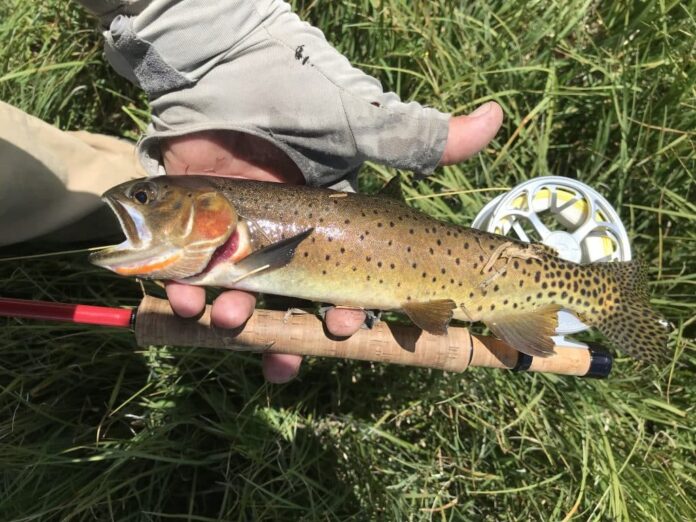Michael Salomone/Courtesy photo
The two main families for fly reels are determined by their drag design, disc drag and click and pawl drag. The intricacies found in the drag systems on some fly reels rivals the power brakes found on vehicles. Whether purposely chosen simplistic design or technically engineered high performance, the right fly reel compliments the fly rod to form the perfect angling package.
Basic fly-reel construction comes from a round disc with an offset handle allowing for winding around a central spindle. There is always some type of “foot” to attach the reel to the rod, but it is on the internal working where things get really cool.
Click and pawl drag styles have been the simplest reels to construct. The drag consists of a small triangular tooth — a pawl — that engages into a central, spoked gear. The tension can be adjusted with a small spring that applies pressure to the pawl. The drag design is open with the components easy to reach when the spool is detached.
Cleaning is easily accomplished should grit or river debris enter the reel. Lubrication is super easy to apply as well due to the open access to all the drag components. The reels are much lighter in weight than others due to the minimal amount of parts necessary to construct the reel.
The caveat to click and pawl is that the range of drag pressure is narrow. The small spring inside click and pawl reels can only differ the pressure so much before bottoming out. Therefore, the drag usage for click and pawl reels is relegated mainly to smaller water, fish and rods.

Support Local Journalism
For years, trout reels have been click and pawl designs. Cheaper to produce, these reels are usually associated with baptismal experiences and memories. The sound the reel makes during the fight is like no other. Every angler remembers the “big fish” that tested the limits of a reel and angler.
This is not to discourage click and pawl reels at all. Some of the finest trout reels I’ve ever fished with were of this design. When I look through my collection of 33 fly reels, a dozen are click and pawl drag style reels. My first fly reel, the popular Medalist, is a click and pawl. From tiny 2wt reels barely a couple inches in diameter to modern day renditions like the Colorado LT from Ross Reels, click and pawl drags still run strong and frequently adorn my rod.
When it comes to hard-core stopping power, disc drags rule the game. Constructed with everything from old school cork to space age materials, stacks of discs provide a wider range of drag adjustability than click and pawl reels. Most disc drag reels are sealed to eliminate the introduction of debris into the drag components. Therefore, disc drag reels are more prevalent for larger fish, heavier weight fly rods and always in the saltwater.

Michael Salomone/Courtesy photo
Disc drag reels can be extremely adjustable to vary pressure over a wide range of poundage. When a bonefish flexes its tail to burst across the saltwater flat after the hookset, a disc drag reel is a necessity for hauling that fish back in. After a mahi-mahi slams my squid fly 12 miles offshore in the Bluewater I rely on a disc drag fly reel that could winch my raft into my trailer. Disc drags are the only option for big game fly fishing.
While any angler can open a click and pawl style reels for maintenance, routine cleaning of a disc drag reel is much more involved and often requires tools. The best way to keep these reels in tip top shape is through the manufacturer. Most reel companies will be happy to provide routine maintenance for your high-end reels, and I say high-end because disc drags are complex, requiring more parts and sturdy construction. As a result, the price is at a premium and on the higher end of the scale, but for a reason.
Whether using a fly reel high in the Alpine lakes of the Colorado wilderness where a cutthroat is unlikely to steal your line, a click and pawl style reel that is lightweight serves the purpose well. When you are standing on the sand with saltwater around your feet a stout, disc drag is going to be your best friend. Two different styles of fly reels that do more than just hold your line.

Michael Salomone/Courtesy photo































